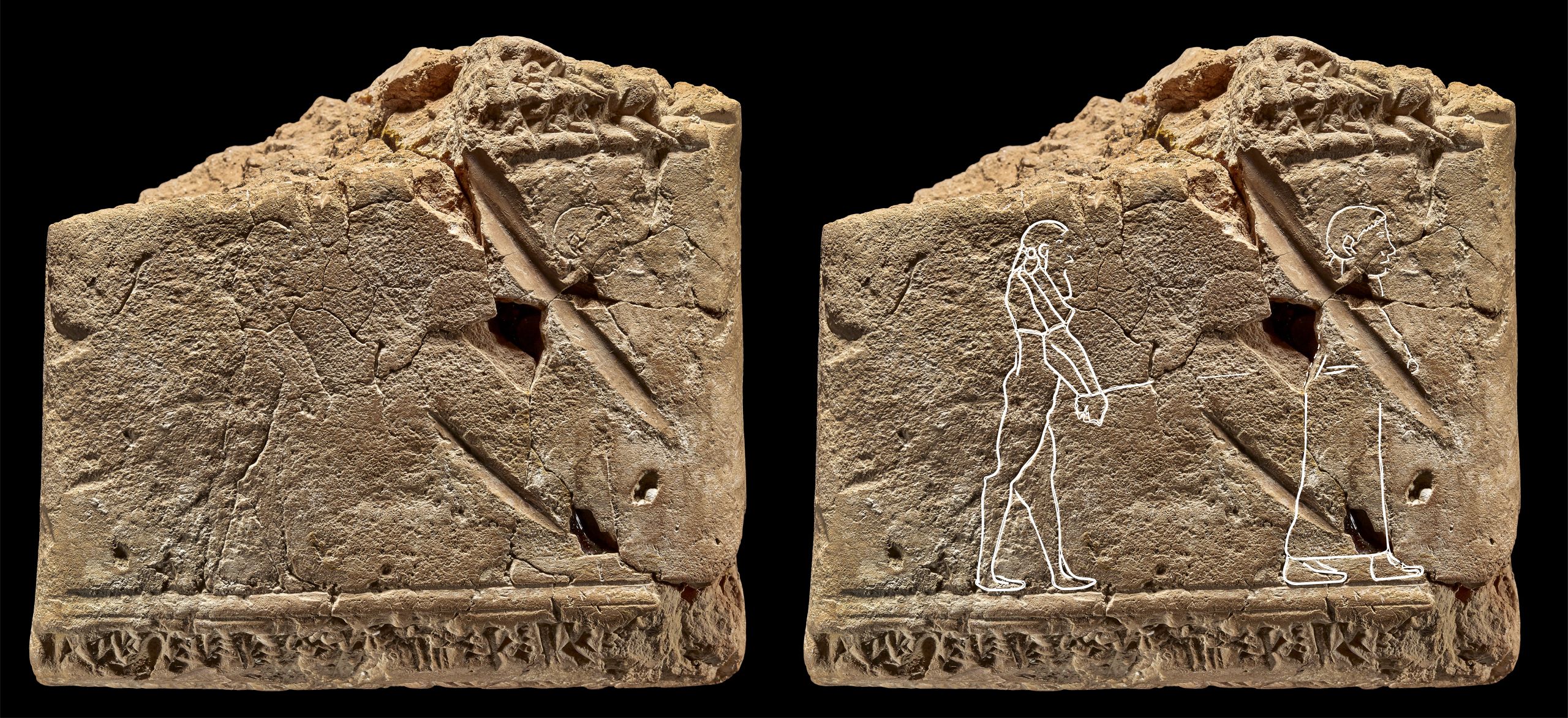Oldest ghost drawing discovered on Babylonian exorcism tablet
"Do not look behind you."

A museum curator has discovered the oldest-known ghost drawing on a 3,500-year-old ancient Babylonian tablet that also includes instructions for how to exorcise the unwanted spirit.
The drawing on a clay tablet depicts a seemingly grumpy, bearded male ghost being led to the underworld on a rope by a woman. A ritual engraved alongside the sketch explains that the solution for removing pesky male ghosts is to give them a lover.
While examining ghost-related tablets in the vaults of the British Museum in London, Irving Finkel, a senior curator in the museum's Middle East department, discovered the drawing and translated the accompanying ritual, The Guardian first reported.
"This ritual would be enacted I think in the case of a persistent domestic, probably family ghost who was getting really beyond a joke, and lots of people were being startled and didn't want it to go on any longer," Finkel told Live Science.
Related: 13 bizarre mythical monsters to haunt your Halloween
The British Museum acquired the tablet in the 19th century, along with thousands of other tablets from Babylon, an ancient city about 60 miles (100 kilometers) south of Baghdad in modern-day Iraq. The tablets provide insight into what life was like in Babylon and the wider region, called Mesopotamia.
The tablet is small enough to fit in one hand, and at least half of it is missing. Finkel knew that the tablet's cuneiform text — an ancient writing system from the Middle East — described a ghost ritual, but he didn't examine the tablet properly until he started conducting research for his new book: "The First Ghosts" (Hodder & Stoughton, 2021), which is being released on Nov. 11.
Get the world’s most fascinating discoveries delivered straight to your inbox.
Upon closer inspection, Finkel found the fine drawing, which is barely visible to the naked eye, and he identified the ghost and woman. "These characters suddenly walked out of a myth," Finkel said. "It was very exciting." The image serves as a visual aid to the ritual, which would have been performed by an exorcist.
The ritual instructs the reader to make figurines of a man and a woman, and equip them with specific items, including travel provisions for the man and furniture for the woman. The figurines are then to be buried together at sunrise while the exorcist recites a spell. The spell on the tablet is incomplete, but it begins by calling the sun god Shamash, who was responsible for the movement of ghosts to the underworld.
This was not a symbolic ritual, but a literal one, Finkel said. The exorcist was meant to transfer the ghost into a figurine so that he could pass over with Shamash's blessing. The last line of the ritual warns "do not look behind you." Finkel believes this warning was meant for the figurines as they entered the underworld, but he can't be sure; perhaps the message was meant for the exorcist as they left the figurines.
The tablet likely came from an exorcist's library or a temple. A master craftsperson likely created the rare drawing, Finkel said, as clay is an unforgiving medium to draw on and requires tremendous skill.
Finkel hopes his new book will shine a light on Mesopotamia in ghost history and highlight how accessible the ancient Mesopotamian culture is today. "The people who come out of these pages don't look like museum constructions; they don't look like weirdos from another planet; they look like people that we would recognize," Finkel said.
According to Finkel, people today would recognize their fears, suspicions and rituals. "All those sorts of things add up to a picture which is very familiar, in the sense of, the humanity under it is the same humanity as today."
Originally published on Live Science.

Patrick Pester is the trending news writer at Live Science. His work has appeared on other science websites, such as BBC Science Focus and Scientific American. Patrick retrained as a journalist after spending his early career working in zoos and wildlife conservation. He was awarded the Master's Excellence Scholarship to study at Cardiff University where he completed a master's degree in international journalism. He also has a second master's degree in biodiversity, evolution and conservation in action from Middlesex University London. When he isn't writing news, Patrick investigates the sale of human remains.
